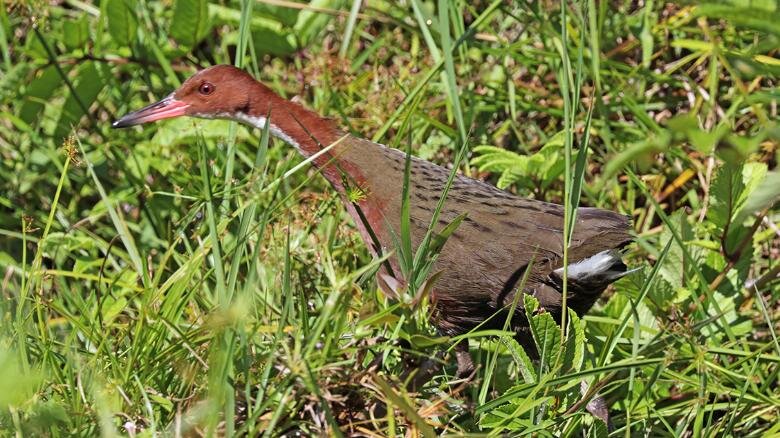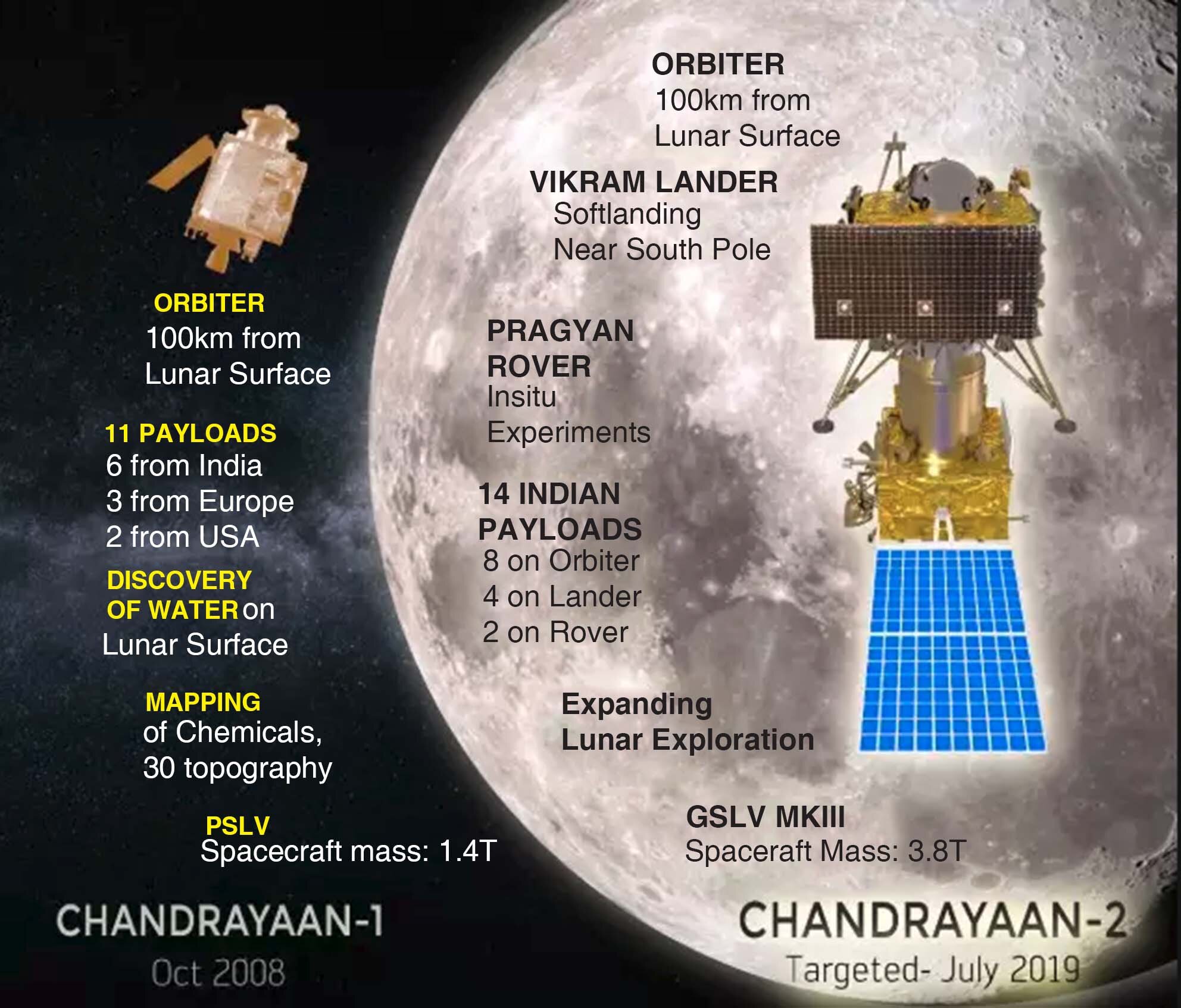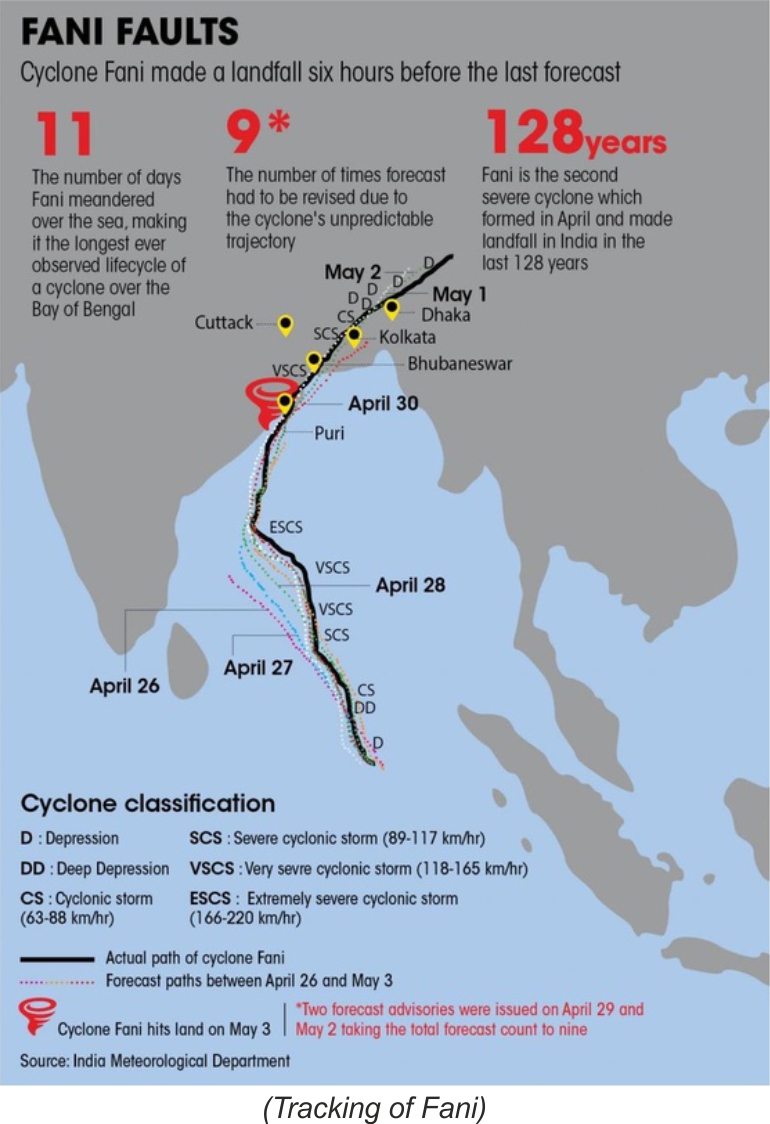Biodiversity & Environment
Cyclone Fani Creates Four New Mouths in Chilika Lake
The recent ‘Cyclone Fani’ which hit the eastern coast of India, has created four new mouths in Chilika Lake.
Key points
- Before Fani hit the Odisha coast, Chilika lake had only two active mouths - the point where it meets the sea. But, now four new mouths have opened due to wave energy with high tidal prism.
- With the opening of new mouths, a lot of sea water is entering Chilika Lake and, thereby increasing salinity of Chilika lagoon.
- Chilika lake has a brackish water (mixture of saline and fresh water), however increasing salinity may alter Chilika’s ecosystem.
- Generally, if sea water ingression goes up, fish migration will increase and the biodiversity will get richer. However, its long term impact needs a proper vigil.
Chilika Lake
- It is a brackish water lagoon, spread over the Puri, Khurda and Ganjam districts of Odisha State on the east coast of India.
- It is the largest coastal lagoon in India, located at the mouth of the Daya River which is flowing into the Bay of Bengal, covering an area of over 1,100 km2.
- It is designated as ‘wetland of international importance under the Ramsar convention.
Cyclone Fani
- It is categorized as an extremely severe cyclone (ESC).
- The name of the cyclone fani (pronounced as Foni) was suggested by Bangladesh. It means ‘snake’ or ‘hood of snake’.
- Data from the India Meteorological Department (IMD) show that the last time an extremely severe cyclone hit India in May was in 2004.
NOTE: The cyclones are classified as severe (MSW of 48-63 knots), very severe (MSW of 64-89 knots), extremely severe (MSW of 90-119 knots) and super cyclonic storm (MSW of 120 knots or more). One knot is equal to 1.8 kmph.
What makes Cyclone Fani special?
- Timing and strength are two factors that make Cyclone Fani, different from most other tropical cyclones at this time of the year.
- It is the second severe cyclone which formed in April and made landfall in India in the last 128 years.
- It was the longest-lived cyclone in the Bay of Bengal ever observed. The elongated time period of the storm went on for 11 days in the sea and land put together.
Preparedness
- The IMD tracked the storm and issued numerous yellow warnings for much of the south-eastern portion of India when the cyclone started to intensify.
- Doppler radars at Paradip and Gopalpur ports helped in tracking the cyclone accurately.
- 'Early Warning Dissemination System (EWDS) project’ which was commissioned in 2018, addresses the existing gap in disseminating disaster warning up to the community level.
- Odisha evacuated over 1.2 million residents from vulnerable coastal areas and moved them to higher ground and into cyclone shelters built a few miles inland.
- Teams of National Disaster Response Force (NDRF), Odisha Disaster Rapid Action Force (ODRAF) along with State fire service personnel have been deployed. Defence forces were on high alert to meet any eventuality.
- On account of this, the number of casualties contained to minimal. However, there was extensive damage to the infrastructure especially, power and telecommunications.
Early Warning Dissemination System (EWDS):
- It aims at establishing a fool-proof communication system to disseminate disaster warning up to the community level.
- It is a first of its kind automatic public address system in the country, implemented under national Cyclone Risk Mitigation project with the help of World Bank.
Way Forward
- Cyclone Fani has left behind a trail of devastation and acute suffering in Odisha. The challenge now is to restore the livelihood of people.
- Administrations are on full throttle in repair and relief measures. However, repairs and rehabilitation work needs to be done quickly owing to the upcoming monsoon season.
Indian Polity
SC Upholds Karnataka Law Granting Reservation In Promotion For SC-ST
The Supreme Court has upheld the constitutional validity of the Karnataka Extension of Consequential Seniority to Government Servants Promoted on the Basis of Reservation (to the Posts in the Civil Services of the State) Act 2018.
Background of this Judgement
- In Indra Sawhney vs Union of India, the Supreme Court had held that reservations under Article 16(4) could only be provided at the time of entry into government service but not in matters of promotion.
- In 1995, Parliament, acting in its constituent capacity, adopted the 77th amendment by which clause (4A) was inserted into Article 16 to enable reservation to be made in promotion for SCs and STs.
- The validity of the 77th and 85th amendments to the Constitution and of the legislation enacted in pursuance of those amendments was challenged before the Supreme Court in the Nagaraj case. The SC upheld the constitutional validity of these amendments and ruled that:
- If the state “wished to exercise their discretion and make provision (for reservation in promotions for SCs/STs), the State has to collect quantifiable data showing backwardness of the class and inadequacy of representation and compliance to Article 335”.
- It will have to see that its reservation provision does not breach the ceiling-limit of 50%.
- The Karnataka Determination of Seniority of the Government Servants Promoted on the Basis of the Reservation Act 2002 was held to be unconstitutional [in BK Pavitra CASE] on the ground that an exercise for determining 'inadequacy of representation', 'backwardness' and the impact on 'overall efficiency' had not preceded the enactment of the law.
Why this is Significant
This Supreme Court order is significant because it underlines “a ‘meritorious’ candidate is not merely one who is ‘talented ‘or ‘successful’ but also one whose appointment fulfils the constitutional goals of uplifting members of the SCs and STs and ensuring a diverse and representative administration”.
Basis for the Judgement
- The providing of reservation for SCs and STs is not at odds with the principle of meritocracy. Merit must not be limited to narrow and inflexible criteria such as one’s rank in a standardised exam, but rather must flow from the actions a society seeks to reward, including the promotion of equality in society and diversity in public administration.
- Article 335 recognises that special measures need to be adopted for considering the claims of SCs and STs in order to bring them to a level-playing field. Centuries of discrimination and prejudice suffered by the SCs and STs in a feudal, caste-oriented societal structure poses real barriers of access to opportunity.
Judges Verdict on Efficiency
- Efficiency of administration in the affairs of the Union or of a State must be defined in an inclusive sense, where diverse segments of society find representation as a true aspiration of governance by and for the people.
- The Constitution mandates realisation of substantive equality in the engagement of the fundamental rights with the directive principles, inclusion, together with the recognition of the plurality and diversity of the nation constitutes a valid constitutional basis for defining efficiency.
- If efficiency is grounded in exclusion, it will produce a pattern of governance which is skewed against the marginalised.
Biodiversity & Environment
White-Throated Rail
- The white-throated rail (Dryolimnas cuvieri) or Cuvier's rail is a species of bird in the family Rallidae. It is found in Comoros, Madagascar, Mayotte, and Seychelles.

- A flightless subspecies, Aldabra rail, inhabits Aldabra, while another Assumption rail from Assumption went extinct in the early 20th century due to introduced predators.
- It is now the last living member of the genus Dryolimnas and believed to be the last flightless bird in the Indian Ocean.
- Its natural habitats are subtropical or tropical moist lowland forest and subtropical or tropical mangrove forest.
- It has a least concerned status in IUCN Red List.
History of Evolution
- According to research, it is found that white-throated rail came back after extinction, through a process called “iterative evolution”. This is the first time it has been seen in rails, and one of the most significant seen birds.
- On two separate occasions tens of thousands of years apart, the species of rail was able to colonise called Aldabra. In both cases it eventually became flightless, and those birds from the latter time can still be found on the island now.
Iterative evolution happens when the same or similar structures evolve out of the same common ancestor, but at different times. It means that the animal actually comes about twice over, completely separately.
- The rail's return to Aldabra is not the only time in its lineage that it has escaped extinction.
- The parent species of the rail, indigenous to Madagascar, would frequently see its population explode, forcing the birds to migrate in great numbers from the island off the coast of East Africa.
- Many of those that flew north or south drowned in the Indian Ocean, and those that went west landed in Africa, where they were eaten by predators. But the lucky few who went east ended up on islands including Mauritius, Réunion and Aldabra.
- The rails on Aldabra lost the ability to fly over time, because of the lack of predators made it unnecessary, just as the dodo of Mauritius did.
- Unfortunately, that gave them no means of escape when the island was submerged and all its flora and fauna were wiped out.
- But unlike the dodo, which became extinct in the 17th century, the white-throated rail was resurrected to tell the tale once the island re-emerged and birds started migrating to the destination again.
- Researchers found similar fossils from before and after that event, showing that the chicken-sized bird re-appeared when sea levels fell again a few thousand years later, re-colonized the island and again lost the ability to fly.
- Aldabra, which has the oldest palaeontological record of any oceanic island within the Indian Ocean region, the fossil evidence available demonstrates the effects of changing sea levels on extinction and recolonization events.
- Fossil evidence presented here is unique for rails and epitomizes the ability of these birds to successfully colonize isolated islands and evolve flightlessness on multiple occasions.
Indian Economy
WTO Ministerial Meeting of Developing Countries
India will host a WTO ministerial meeting of developing countries in New Delhi on May 13 & 14, 2019.
Key highlights
- The meeting is a run up to the twelfth Ministerial Conference of the WTO to be held in Kazakhstan in 2020.
- The meeting is an effort to bring together the developing countries and the Least Developed Countries on a platform for sharing common concerns on various issues affecting the WTO and to address the following issues:
- WTO’s appellate body has shrunk over the last two years from its required strength of seven members to three.
- At present, the appellate body takes a year to hear appeals, whereas the time to dispose off the appeals is 90 days.
- Special and differential treatment of developing countries in the WTO is a concern for some other countries.
- The increased unilateral measures and counter-measures by member countries, as well as deadlock in key areas of negotiations and the impasse in the WTO's appellate body has given rise to demands to reform the organization.
The World Trade Organization (WTO)
- It is the only global international organization dealing with the rules of trade between nations.
- It came into existence on January 1, 1995 and has its headquarters in Geneva, Switzerland.
- All major decisions are made by the WTO's member governments, either by ministers (who usually meet at least every two years) or by their ambassadors or delegates (who meet regularly in Geneva).
Special and Differential Treatment provisions
- The WTO Agreements contain special provisions which give developing countries special rights and developed countries the possibility to treat developing countries more favourably than other WTO Members.
- The special provisions include:
- longer time periods for implementing Agreements and commitments
- measures to increase trading opportunities for developing countries
- provisions requiring all WTO members to safeguard the trade interests of developing countries
- support to help developing countries build the capacity to carry out WTO work, handle disputes, and implement technical standards
- provisions related to least-developed country (LDC) members
Important Facts For Prelims
Important Facts For Prelims (11th May 2019)
Thirty Meter Telescope (TMT)
- Thirty Meter Telescope is a new class of extremely large telescopes that will allow us to see deeper into space and observe cosmic objects with unprecedented sensitivity. It is getting built at Mauna Kea, Hawaii, USA.
- With its 30 m prime mirror diameter, TMT will be three times as wide, with nine times more area than the largest currently existing visible-light telescope in the world.
- This will provide unparalleled resolution with TMT images more than 12 times sharper than those from the Hubble Space Telescope. When operational, TMT will provide new observational opportunities in essentially every field of astronomy and astrophysics.
- The TMT International Observatory LLC (TIO), a non-profit organization, was established in May 2014 to carry out the construction and operation phases of the TMT Project.
- The partner members of TIO are:
- Caltech, the University of California, US.
- The National Institutes of Natural Sciences of Japan.
- The National Astronomical Observatories of the Chinese Academy of Sciences.
- The Department of Science and Technology of India.
- National Research Council, Canada.
- The Association of Universities for Research in Astronomy, US.
- Indian government: has given its approval for India’s participation in the TMT project at a total cost of Rs. 1299.8 crores from 2014-2023.
- From the Indian side, this will be a joint project of the Department of Science and Technology (DST) and the Department of Atomic Energy (DAE).
- Inter-University Centre for Astronomy and Astrophysics, Pune; Indian Institute of Astrophysics, Banglore; Aryabhatta Research Institute of Observational Sciences, Nainital are involved in TMT project.
- The Indian industries are making the telescope’s sensors, actuators and its mechanical support structure.
- The project will also provide state-of-the-art high-end technologies to the country, which would benefit a number of industries and R&D centres.
Lunar Lander: Blue Moon
- The space company 'Blue Origin’ has unveiled its lunar lander called the Blue Moon that would be used to transport equipment, and possibly human beings, to the South Pole of the Moon by 2024.
- The lander will be capable of carrying scientific instruments and also rovers for humans.
- The goal is to land on the Moon's south pole, where there is ice. Water can be exploited to produce hydrogen, which in turn could fuel future exploration of the solar system.
- The lander will be part of Blue Origin’s broader vision to build an infrastructure that would sustain the colonization of space by future generations of humans and shift polluting industries off the Earth.
- Blue Origin is working on two other major projects: New Shepard, a suborbital rocket to fly tourists into space; and New Glenn, a partly reusable launch rocket.
Chandrayaan-2
- A recent update from ISRO has stated that the planned 'Chandrayaan-2’ mission will have 14 Indian payloads or study devices.

- Chandrayaan-2 will be India’s second mission to the moon.
- The Chandrayaan-2 will be launched during July 9 to July 16, 2019, with an expected Moon landing on September 6, 2019.
- The 3,800-kg spacecraft includes an orbiter which will circle the moon at 100 km; a five-legged lander called Vikram that will descend on the moon; and a robotic rover, Pragyan, that will probe the lunar terrain around it. ISRO will send the mission on its heavy lift booster – GSLV MkIII.
- ISRO has chosen a landing area at the unexplored lunar south pole. If the mission succeeds, India will be the first to touch down at the south pole. Only China’s Chang’e 4 spacecraft had recently landed on the moon's far side, also known as the dark side because it faces away from the Earth and remains comparatively unknown.
- In October 2008, ISRO launched its orbiter mission Chandrayaan-1.
- The spacecraft had 11 payloads. One of the US payloads shares credit with Chandrayaan-1 for confirming the presence of water ice on the moon.
Recyclable Plastic
According to a study published in the journal ‘Nature Chemistry’, scientists have created a plastic that can be repeatedly recycled without any loss of quality.
Key points
- A new material called poly (diketoenamine) or PDK can, unlike normal plastics, have its monomers separated by a highly acidic solution.
- The material can be fully broken down into its component parts by dunking it in a highly acidic solution.
- The acid separates the monomers from additives that give plastics distinctive look and feel.
- The monomers can be recovered for reuse for as long as possible or upcycled to make another product.
- Scientists believe that this recyclable plastic could be an alternative to non-recyclable plastics in use today. Conventional plastics generally have immutable bonds whereas PDK has reversible bonds that allow the plastic to be recycled more effectively.
- Materials like PDK will help in making the lifecycle of plastics circular and help countries in reducing the plastic pollution. At present, the world produces about 300 million tonnes of plastic waste every year.
Monkeypox Virus
- Singapore has reported its first ever case of rare monkeypox virus.
- Monkeypox virus (MPXV) is an orthopoxvirus that causes a viral disease with symptoms in humans similar, but milder, to those seen in smallpox patients. Symptoms include lesions, fever, muscle aches and chills.
- Transmission is usually via close contact with infected animals such as rodents and monkeys but is limited between people.
- Human monkeypox is endemic in villages of Central and West Africa.
- Outside Africa, human monkeypox infections had only been previously reported in the United States, Britain and Israel.
- There are no specific treatments or vaccines available for monkeypox virus infection, but outbreaks can be controlled.
NOTE: Vaccination against smallpox has been proven to be 85% effective in preventing monkeypox in the past but the vaccine is no longer available to the general public after it was discontinued following global smallpox eradication.






